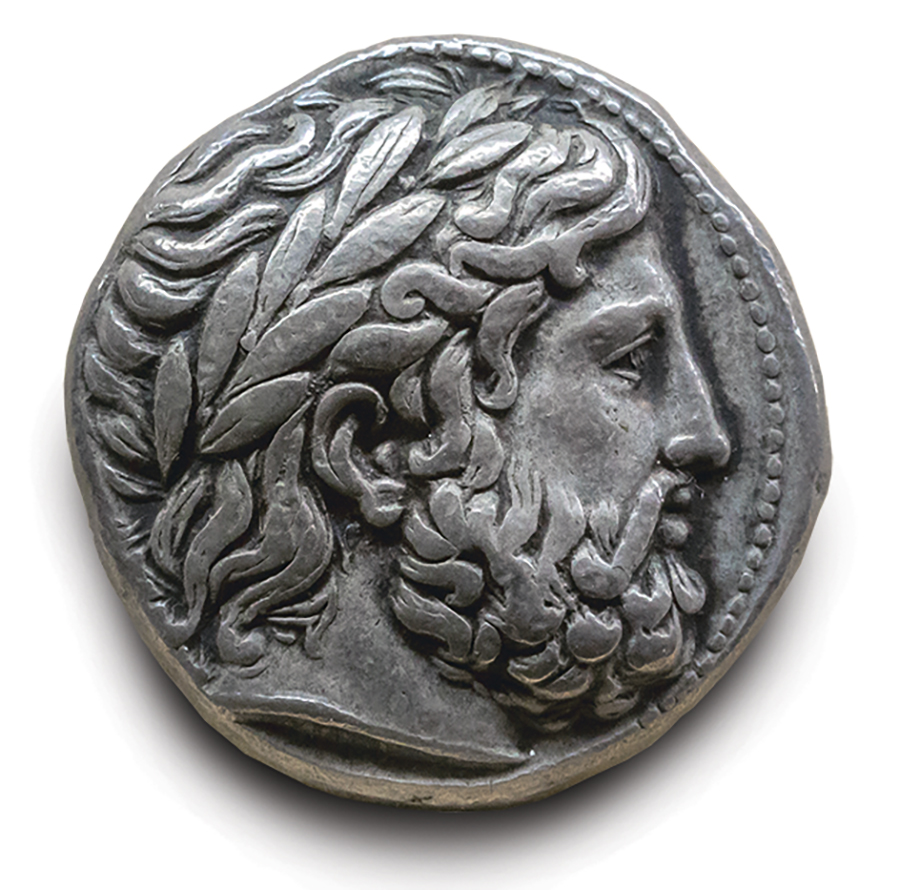
King Philip II of Macedon
Born in 382 bce, Prince Philip of Macedon spent 368 to 364 as a diplomatic hostage in Thebes. He acquired respect for Hellenic civilization and ambition to become part of it, at sword-point if necessary. Attaining the throne in 359, King Philip II reorganized his army to go beyond the standard Greek phalanx to a flexible combined-armed force of infantry based on the 12-foot and longer sarissa along with cavalry and light troops. He unleashed war on the Balkans, Hellenic city states to the south and even Persia’s Achaemenid Empire. During his siege of Athenian ally Methone in 355–354, Philip was injured in his right eye, which had to be surgically removed. Despite that, he held off two relieving Athenian fleets and achieved victory.
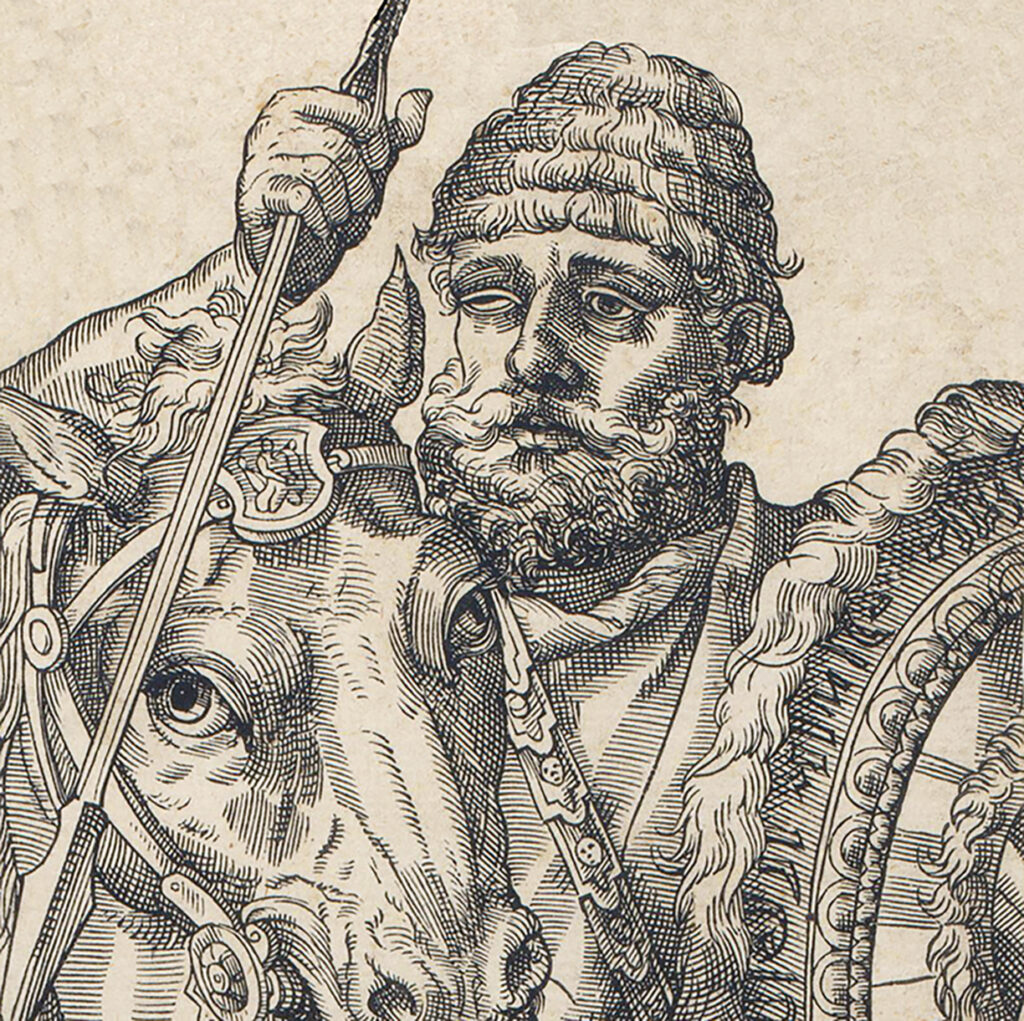
Hannibal
Hannibal, born in 247 bce to a line of Carthaginian generals, swore an oath at age 9 to “never to show goodwill to the Romans.” Determined to avenge Carthage’s defeat in the First Punic War, he set forth over the Alps in 218 bce at the head of a polyglot army of 10,000 Iberians and Numidians, 6,000 Iberian and Numidian cavalry and 37 elephants. Marching from Iberia to northern Italy in 15 days, Hannibal allegedly lost the sight of one eye to ophthalmia near the Arno River in spring 217. Nevertheless, he managed a series of devastating victories over Roman armies, notably at the Trebbia in December 218, at Lake Trasimene in June 217 and most famously at Cannae in August 216, the latter still studied as a model of the double envelopment maneuver.
Xiahou Dun
Often depicted as a cruel villain in Chinese classical literature, Cao Cao (155?–220 ce) gets his due in the history books as a master strategist of the final years of the Eastern Han Dynasty (25–220) and the era of the Three Kingdoms (220–280), laying the groundwork for the dynastic state of Cao Wei. One lieutenant who played a key role in his success was Xiahou Dun, who matched him as a military strategist and political administrator. Xiahou, an officer in Cao Cao’s army around 190, came into prominence during the campaign to recover Yan Province from the warlord Lü Bu. During a skirmish in 195 an enemy arrow struck Xiahou’s eye. It is claimed he pulled out the arrow, swallowed the eyeball and went on leading his attack. After that incident he became known as “One-Eyed Xiahou,” but hated the soubriquet; upon seeing his reflection, he tended to throw mirrors to the ground. He established a reputation for loyalty and reliability manifested in campaigns such as that in Hanzhong in 215 and Mobei in 219.
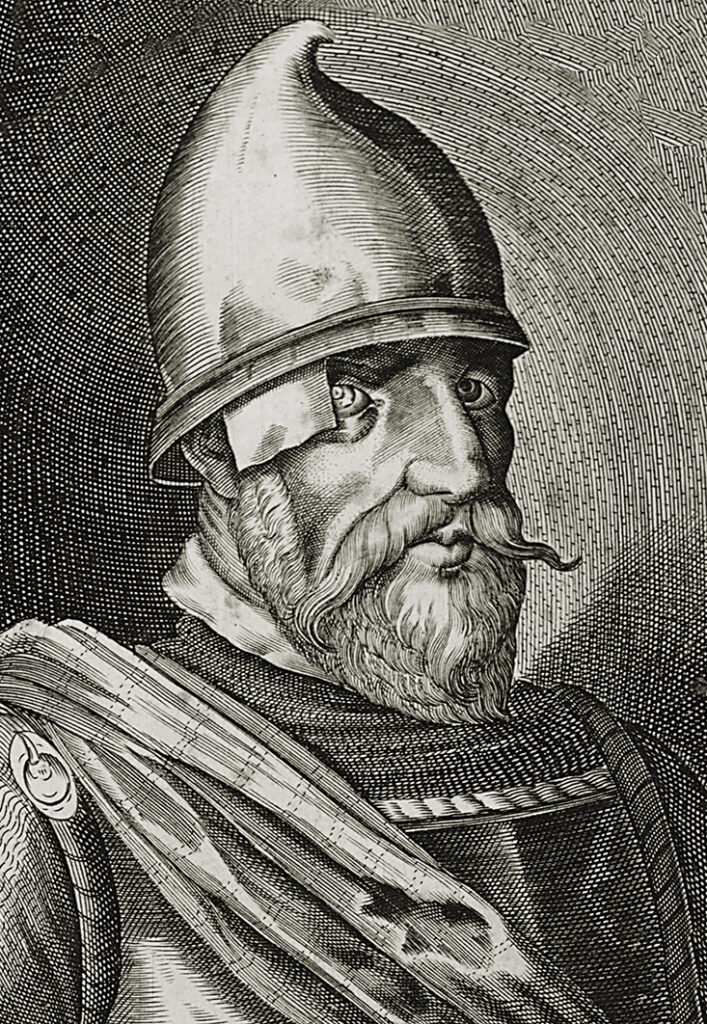
Jan žižka
Jan žižka was born in Trocnov, Bohemia in 1360 and had a pugnacious nature, losing his left eye in a childhood fight. Finding employment in the court of King Wenceslaus IV in Prague, in 1410 he helped the Slavic coalition win the Battle of Grunwald (or Tannenberg). He held the castle at Radzin and studied military technology, including the practice of joining supply wagons into fieldworks. By 1414 žižka was an officer of the guard in Prague, but became an adherent to the theology of Jan Hus, which called for a return to Christianity’s simpler roots. When Hus was killed, his followers would have been crushed by the Holy Roman Empire if not for žižka. He devised many innovations, including flails converted from farm tools and war wagons armed with bows and guns, which formed miniature fortresses and were used with cavalry in defense and offense. Instilling discipline in his men, žižka won battle after battle, overcoming impossible odds. While besieging Bor castle in the summer of 1421 an arrow struck žižka in the right eye, causing an infection that left him completely blind. Nevertheless he campaigned on. His presence on the battlefield inspired his warriors to further victories.
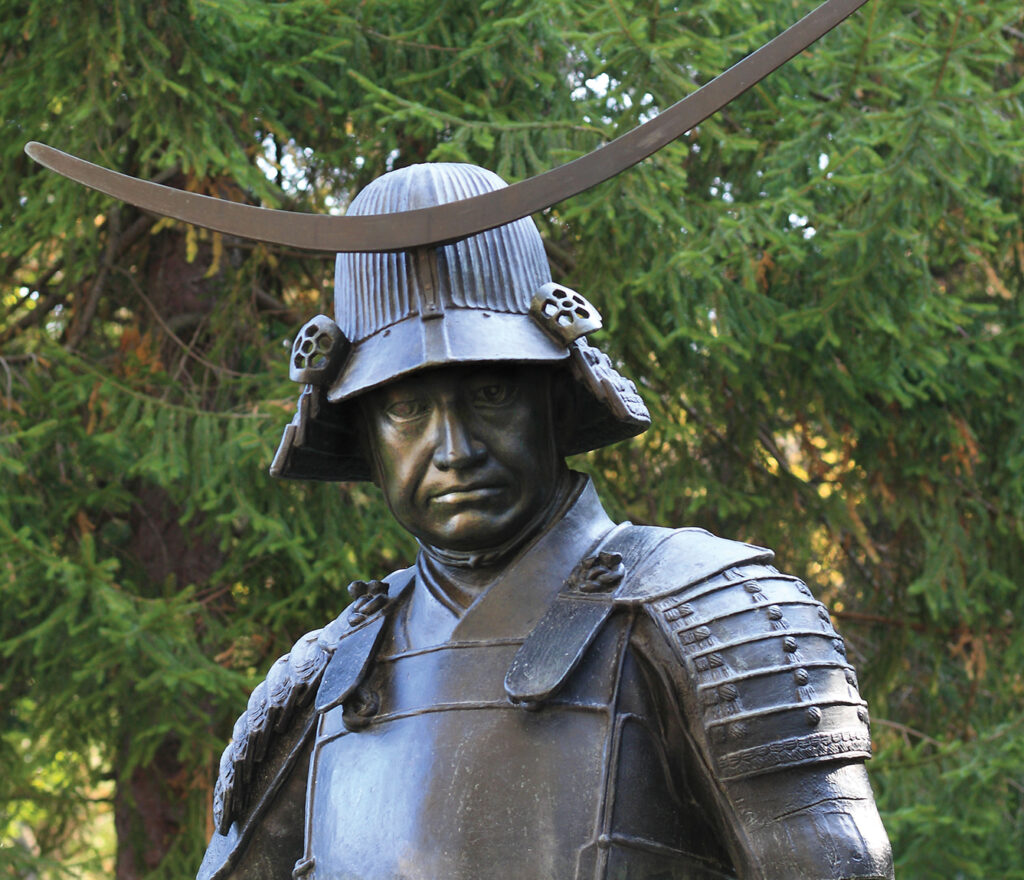
Masamune Date
Born to a daimyo family on Sept. 6, 1567, Masamune Date lost his right eye to smallpox as a child. By age 12, he was accompanying his father, Terumune Date, on campaign against the Soma clan. In 1582 Masamune’s father retired, leaving Masamune the daimyo at 17. Masamune grew into an outstanding tactician—known and feared for his black enameled armor and the golden quarter moon on his helmet, for which he earned the nickname of Dokuganryu Oshu (the One-Eyed Dragon of Oshu). Masamune lent his sword and samurai to Hideyoshi Toyotomi and shifted his allegiance to Tokugawa Ieyasu after the former’s death. He was granted the region around Sendai, which he developed into a political and economic hub. He demonstrated extraordinary statesmanship that included sending diplomatic expeditions to Spain and Rome.
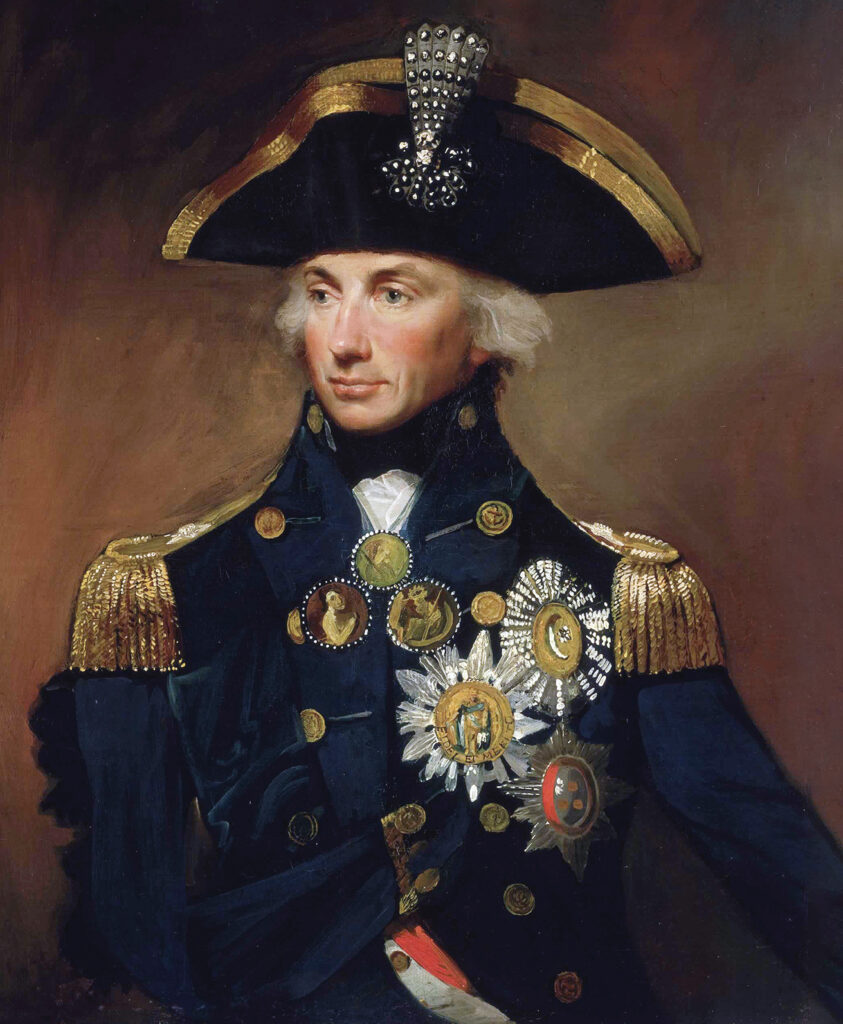
Horatio Nelson
Born to a Norfolk parson on Sept. 29, 1758, Horatio Nelson lost his mother at age 9 and went to sea in March 1771, driven by patriotism and a sense of destiny. He’d sailed the Arctic, Indian and Atlantic oceans by December 1778. While Nelson was covering the evacuation of Bastia, Corsica on July 12, 1796, a French cannonball threw sand into his right eye, severely imparing his vision for life. Yet it did not hold him back. During the Battle of Cape St. Vincent on Feb. 14, 1797, Nelson led a boarding party that captured two Spanish warships. Later, in an unsuccessful assault in the Canary Islands on July 24, a Spanish musket ball shattered his right arm, which had to be amputated. Despite fearing that “a left-handed admiral will never again be considered useful,” Nelson led a surprise attack on the French fleet at Aboukir, Egypt on Aug. 1, 1798, annihilating it and stranding Napoleon Bonaparte’s army in the Sinai Desert. Off Copenhagen on April 2, 1801, when Adm. Sir Hyde Parker signaled his 20 ships to withdraw before Danish shore batteries, Nelson literally turned a blind eye to the order and attacked, silencing the batteries and disabling 10 Danish ships. Commanding 27 ships from the quarter-deck of HMS Victory, Nelson took on a combined Franco-Spanish fleet off Cape Trafalgar on Oct. 21, 1805, sinking or capturing 22 enemy ships but falling in battle. He won the greatest naval victories of the 18th and 19th centuries, establishing British naval dominance and burnishing his place among history’s greatest naval heroes.
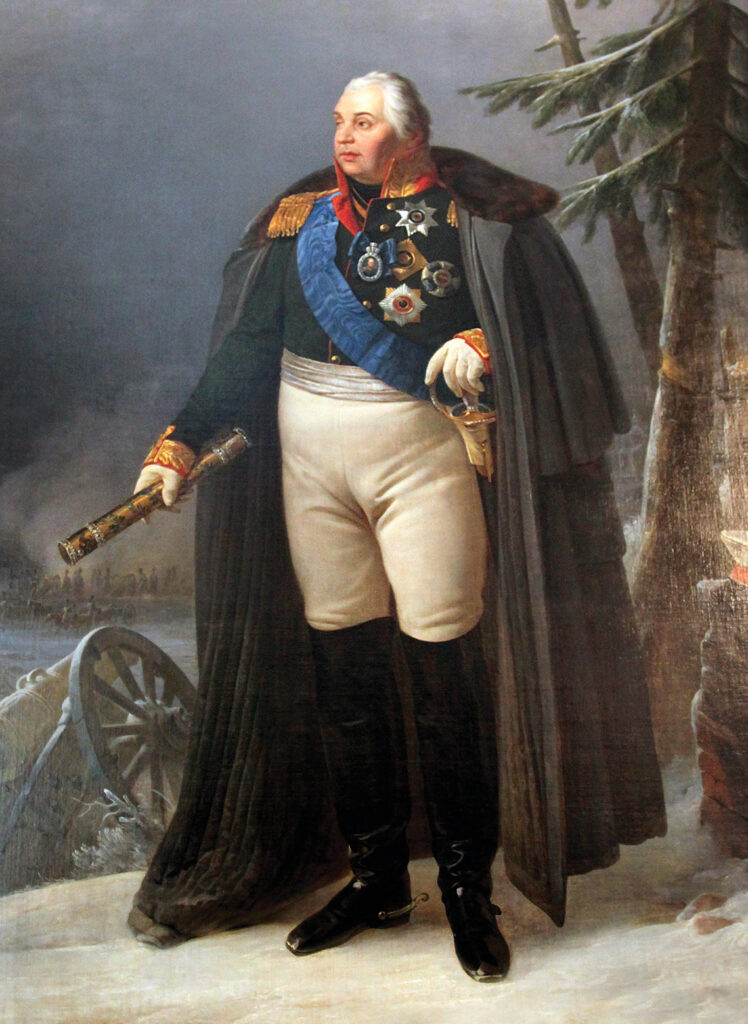
Mikhail Kutuzov
Born in St. Petersburg in 1745, Kutuzov entered military engineer school at age 12. He began his fighting career against rebelling Polish szlachta in 1762. Battling Turks in the Battle of Alushta in 1768, a ball entered his left temple and came out of his right eye, permanently twisting it. He survived that wound, but suffered thereafter from pain and dizziness. Before joining Gen. Aleksandr Suvorov in 1776, he learned of the faraway rebellion among Anglo-American colonists and later studied the campaigns of George Washington, whose tendency to lose most battles yet win the war fascinated him. Fighting the Turks in 1787 Kutuzov was shot in the same part of his head as before and again survived. On Dec. 2, 1805 Kutuzov took part in the Battle of Austerlitz, where Tsar Alexander’s insistence that he abandon the Pratzen Plateau led to the destruction of the Russian army. While the tsar blamed him for the battle’s outcome, Kutuzov fought another war against the Ottoman Empire from 1806 to 1812. Kutuzov was put in command of the Imperial Russian Army on Aug. 17, 1812 and made a stand at Borodino on Sept. 7, losing more men and the battleground but killing or wounding a third of Napoleon’s Grande Armée. His decision to evacuate Moscow plus scorched earth strategy ultimately compelled Napoleon to withdraw; by the time it left Russian territory, the 612,000-strong Grande Armée had been whittled down to 110,000.
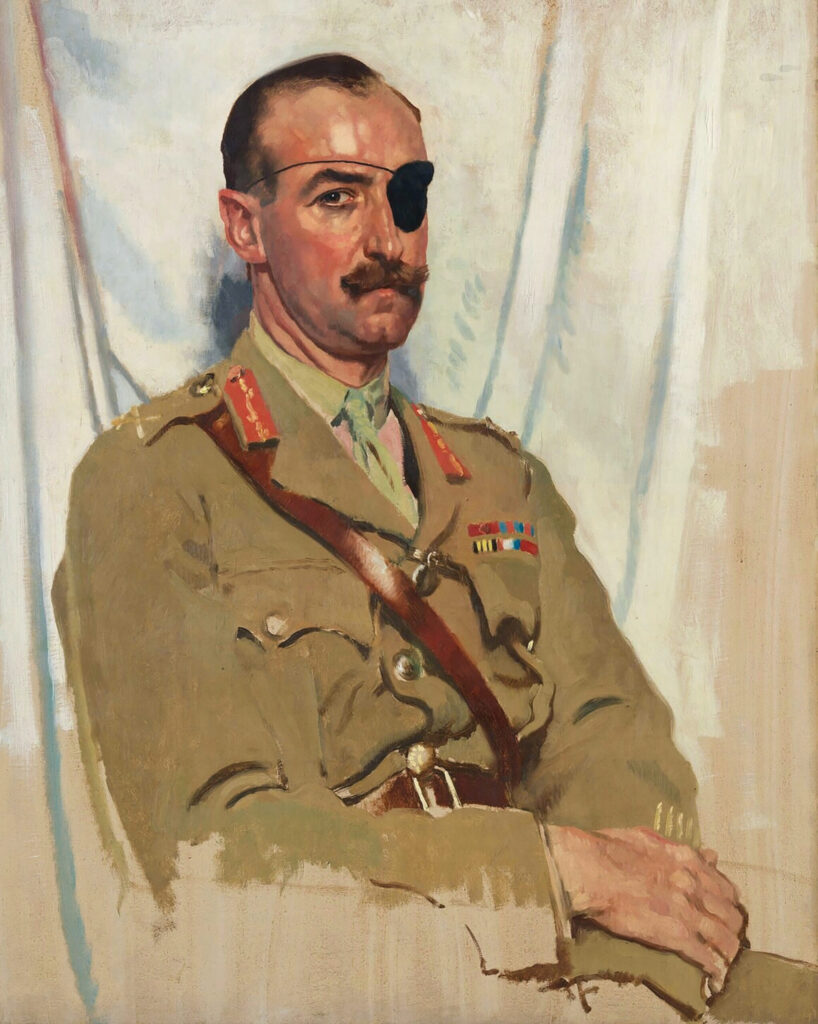
Adrian Carton de Wiart
Adrian Paul Ghislain Carton de Wiart was born to a noble Belgian family in Brussels on May 5, 1880. Joining the British Army in 1899, he fought in the Second Anglo-Boer War and was wounded in the stomach and groin. On Sept. 13, 1907, he became a British citizen and in 1914 was in the Somali Camel Corps fighting Dervishes led by Sayid Mohammed bin Abdullah Hassan, known to the British as “the Mad Mullah.” Storming an enemy fort at Shimber Berris he was shot in the face twice, which destroyed his left eye and a portion of his ear. During World War I, he was shot seven more times: in his left hand, his skull on the Somme, his hip at Passchendaele, his leg at Cambrai and his ear at Arras. On July 2 and 3, 1916 Carton de Wiart led 8th Battalion, 4th Dragoon Guards (Royal Irish) and took charge of three other battalions whose commanders had fallen; he was awarded the Victoria Cross. He later took part in a British military mission to Poland, survived an airplane crash and traded shots with the Bolsheviks during their attack on Warsaw in 1920. Escaping from Poland when it was invaded by Germany and the Soviet Union, he participated in the 1940 Norwegian campaign and survived another plane crash on April 5, 1941. Taken prisoner by the Italians, he made five escape attempts. He later served as diplomatic representative of Winston Churchill.
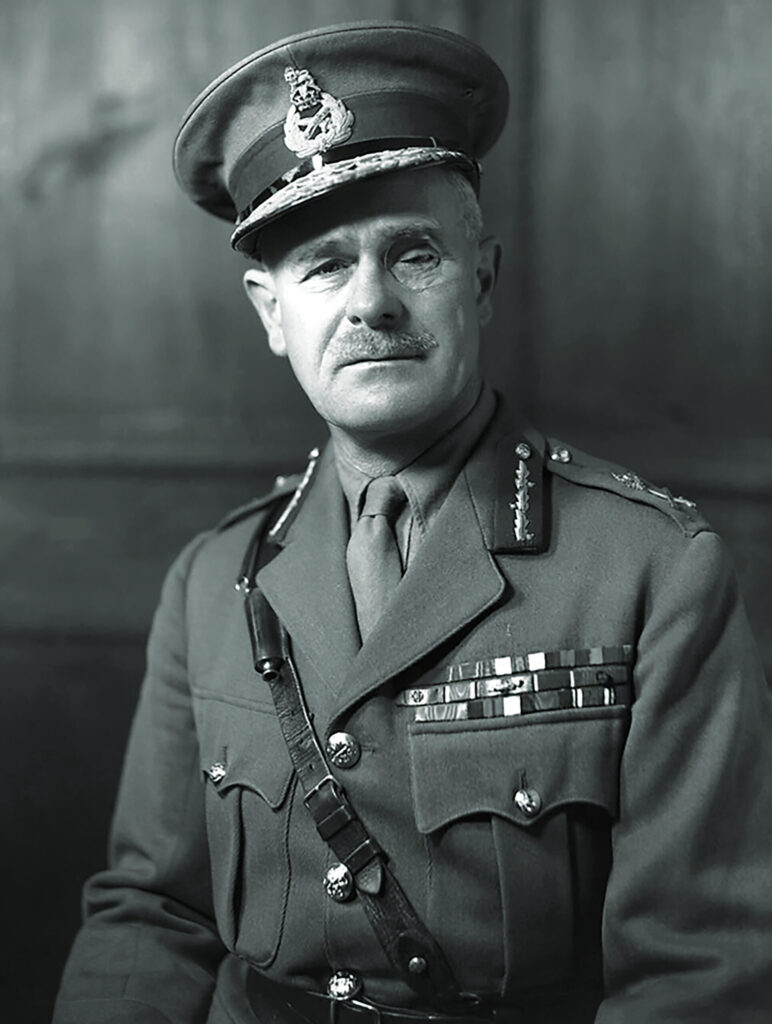
Archibald Wavell
Born in Colchester, Essex in1883, Wavell displayed more of the scholastic than a military bent, but chose an army career just the same. His first assignment was South Africa, but due to illness he didn’t get there before the Second Anglo-Boer War ended. In World War I he was a major in the 9th Infantry Brigade and was wounded during the Second Battle of Ypres in November 1915, losing his left eye. World War II saw him Commander-in-Chief Middle East when Italy entered the war in June 1940. Vastly outnumbered, Wavell’s forces had routed the Italians in Libya, Eritrea and Ethiopia by February 1941, but at that point he was ordered to redeploy much of his forces to Greece. This resulted in disaster when the Italians, bolstered by the German Afrika Korps under Lt. Gen. Erwin Rommel, retook the offensive in North Africa while the Germans overran Yugoslavia, Greece and Crete by May 1941. After a cabal of anti-British Iraqi officers rose in revolt in May, Wavell could only spare a division to relieve the British base at Habbaniya. Wavell supplied more soldiers for the British invasion of Vichy French Lebanon and Syria in June, but mid-June also saw the failure of Operation Battleax, an attempt to relieve the besieged city of Tobruk. In July Churchill exchanged commands, with Claude Auchinleck commanding the Middle East and Wavell India. Wavell suffered his final humiliations when the Japanese took Singapore (December 1941–February 1942) and Burma (January–May 1942).
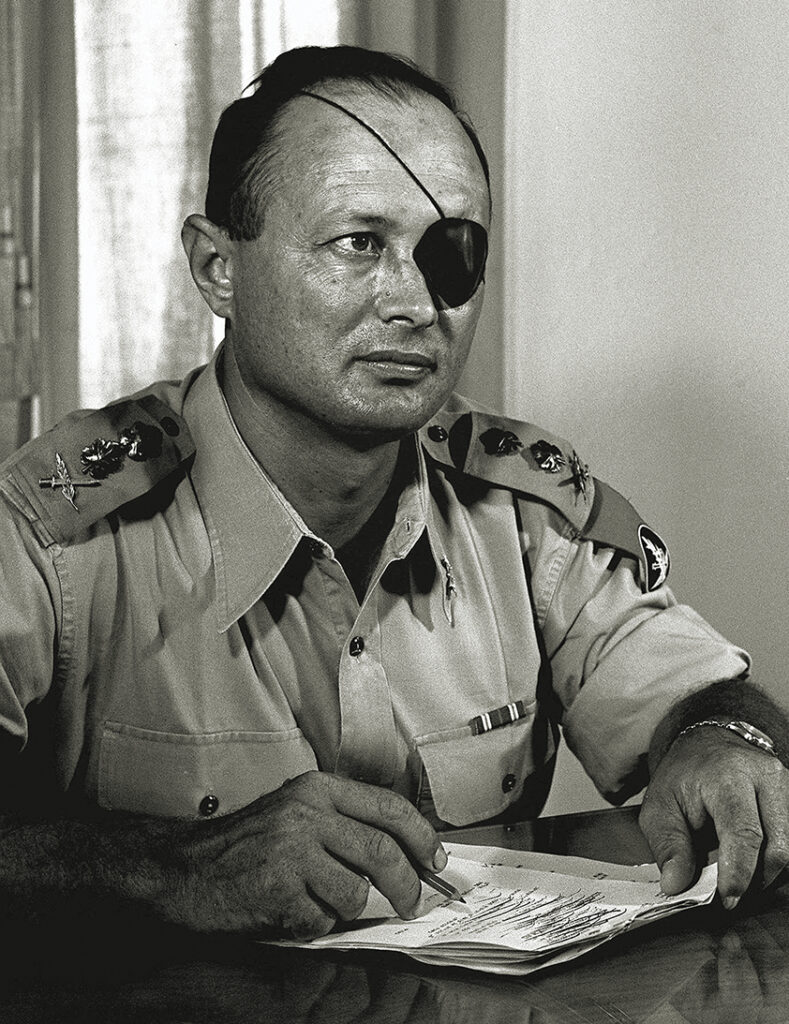
Moshe Dayan
The child of refugees from Ukraine, Moshe Dayan was born at Kibbutz Degania Alef in then Ottoman-ruled Palestine on May 20, 1915. Joining the Haganah (defense force) at age 14, he was inspired by British guerrilla innovator and Zionist sympathizer Orde Wingate. During World War II Dayan was leading an assault on a Vichy French position on June 8, 1941 when a bullet hit the binoculars he was using, sending glass and metal fragments into his left eye. The wound caused too much damage to allow the fitting of a glass eye, necessitating the black eyepatch that became his trademark. He fought in the 1948 War of Independence and later orchestrated the 1956 Israeli Sinai offensive. Dayan was accompanying U.S. Marine forces in Vietnam when the Six Day War broke out, but returned in time to lead the offensive that took East Jerusalem on June 5–7, 1967. When Arab forces launched their surprise Yom Kippur War attacks in October 1973, Dayan helped Israel regain the initiative but shared the blame for being caught by surprise. Serving as foreign minister in 1977, he remains a controversial figure, even in memoirs by his own family.





